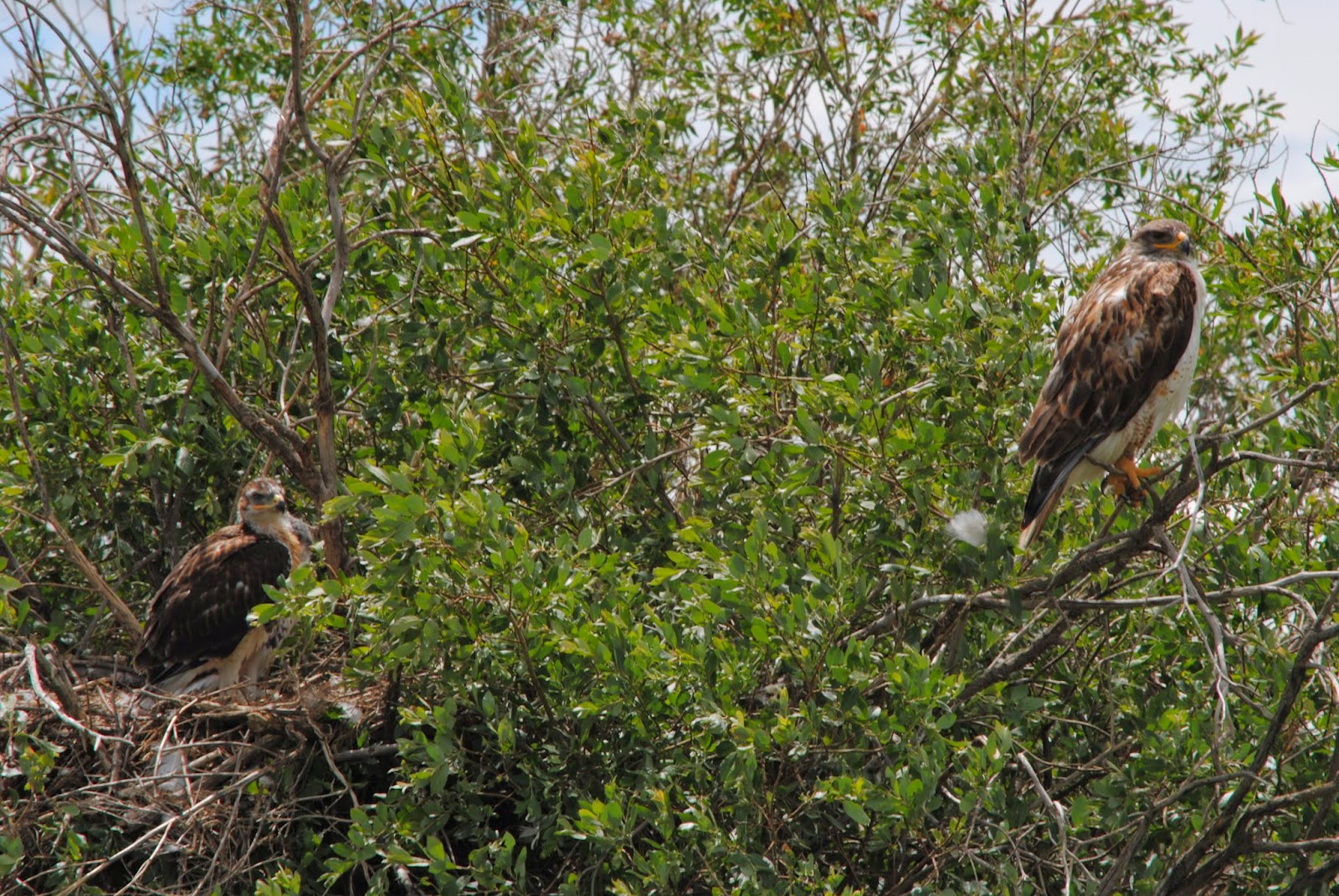As the season progresses we visit the nests in our research area once a week to get numbers and ages of nestlings. The nests are typically too high to climb so we attach a camera to the end of a paint rolling pole and try to get a full view of all the nest and the contents.
Nest peeping can sometimes be a challenge. It usually starts with crawling through a barbed-wire fence. Followed by keeping track of the hawks flying overhead whilst avoiding twisting an ankle in a gofer hole and trying not to upset the field of cows and bulls. I've gotten away with ankle injuries so far but that doesn't mean I haven't ended up flat on my face staring at the grass hoping the gofer was the only one that saw it happen. Then, if it's been raining, which it has, you might also come across some unexpected ponds that don't seem to be too deep to walk through until you step onto a fairly solid looking tuft of grass, and then watch as your non-waterproof hiking boot disappears slowly as it's engulfed by stagnant swamp sludge.
Then there's the clouds of mosquitoes which you can out run until you have to get back through that barbed-wire fence.
But it's all worth it to get to see the hawk babies and collect the important data.
The nestling to the left is around 38 days old. Mum is keeping a close watch over the nest.
These nestlings are about 36 days old. Looks like they are ready to look after themselves!
Recent storms have hit the nesting birds hard, not all nests have made it, some have been predated, others couldn't take the strain of the harsh weather. Many however are doing great, today I saw a full nest of 5 fledglings! It won't be long now until we start to seem them test out their new flight feathers!









